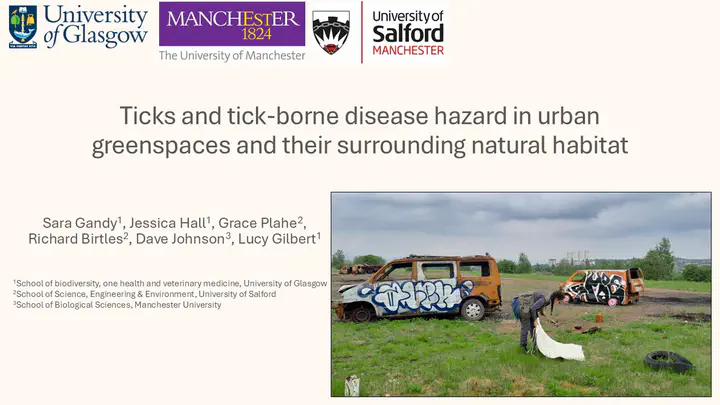Abstract
Within- and between-city contexts and interactions shape our experiences of city life. However, a gap in understanding is how the wider landscape context of cities and interactions with hinterlands influence urban ecology and health hazards. Using a meta-ecosystem framework, we fill this gap for the tick-borne Lyme disease ecological system by comparing tick and Lyme disease hazards of urban and hinterland sites for 16 UK cities. We discover that the hazards of ticks and Lyme disease of urban greenspaces are two- and three-fold lower than of hinterland woodlands. Crucially, urban tick and Lyme disease hazards are shaped by tick abundance and land cover of hinterlands, but not of cities themselves. This highlights how rural-urban interactions form meta-ecosystems and urban eco-epidemiology and public health risk can depend more on the surrounding landscape than within-city landcover. We therefore need to consider interacting factors outside cities to better understand the drivers of urban ecological processes and mitigate disease risk.
Date
Dec 2, 2024 11:00 AM — Dec 4, 2024 5:00 PM
Location
Liverpool
Liverpool,

Research Associate
My research primarily focuses on understanding the ecological drivers of tick-borne diseases to provide insights on the mechanisms involved in transmission cycles, especially on the interactions between ticks, hosts and pathogens. My research includes investigating the impacts of environmental changes (woodland restoration, rewilding) and host community composition (deer, rodent and birds) on tick-borne diseases risks in the UK. Some of my findings uncovered an opposing effect of deer densities on Lyme disease hazard through their positive effects on tick density and negative effects on infection prevalence. I also published work looking at spatiotemporal changes in tick distribution using passive surveillance data and I have been leading the National Tick Survey, which involves collaborating with stakeholders in thirty National Parks and recreational areas to collect ticks and test them for various tick-transmitted pathogens between 2021 and 2024. The goal is to understand disease hazard and temporal variation in areas visited by members of the public and deliver tick awareness messages.
